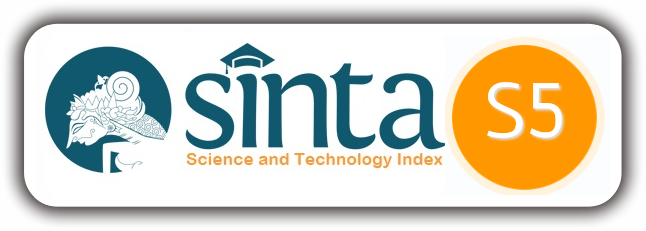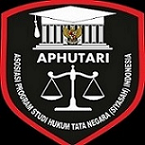Hukuman Mati Bagi Pengedar Narkoba
(1) IAIN Padangsidimpuan
(*) Corresponding Author
Abstract
As for the academic problem, it is find out how the death penalty for drug traffickers is in law number 35 of 2009 and how the death penalty for drug dealers in jinayah fiqh. The type of research, which is carried out by reviewing and examining various documents in the form of books or writings related to the problem. The approach used in this research is a normative juridical approach, namely an approach that examines the problems of the law and then resolves these problems with fiqh jinayah. The result of this research is that the death penalty in law number 35 of 2009 concering drugs is applied to the act of offering for sale, selling, buying, being an intermediary in buying and selling, exchanging, surrendering, or receiving class 1 narcitics in the types of marijuana, heroin, cocaine, morphine, opium, shabu-shabu provided that the weight in the form of plants exceeds 1 kilogram, or exceeds 5 trees or in non-plant form, the weight exceeds 5 grams. Then the execution of the death penalty in article 11 of the criminal code was by hanging and in presidential decree number 2/PNPS/1964 by being shot dead. A review of jinnayah fiqh is a person who can be sentenced to death if he commits a crime from one of the following three criminal acts: deliberate murder, zinamuhson, and apostasy. So tht the death penalty in drug cases applied in Indonesian thtough law number 35 of 2009 concerning drugs is not mentioned, but if it is reviewed from Magoshid As-Syariah, Maslaha and also Sadd Adz-Dzariah, the death penalty can be applied to dealers. Drugs because of the many damages they cause, the presidential decree is part of ta’zir.
Keywords
Full Text:
PDFReferences
REFERENSI
a. Sumber Buku
Koto, Alaiddin, Ilmu Fiqh Dan Ushul Fiqh, Jakarta: Raja Grafindo Persada, 2004.
Nurul irfan, Hukum Pidana Islam, Amzah: Bumi Aksara, 2016.
Rawwas , Muhammad, Ensiklopedi Fiqih, Jakarta: PT Raja Grafindo Persada, 1999.
Sughandi, R., KUHP Dan Penjelasannya, Surabaya : Usaha Nasional, , 1980.
Syarifuddin, Amir, Ushul Fiqh,Jakarta : Zikrul Hakim, 2004.
Smith, Huston, Ensiklopedi Islam, Jakarta : PT Raja Grapindo Persada, 1999.
b. Sumber Jurnal
Gunawan, Hendra. Kitab Undang-Undang Fikih Jinayah (KUFJ).Jurnal El-Qanuniy: Jurnal Ilmu-Ilmu Kesyariahan Dan Pranata Sosial 3, no. 2 (2017): 141.
Harahap, Ikhwanuddin. Pendekatan Al-Maslahah Dalam Fatwa Majelis Ulama Indonesia (MUI) Nomor 24 Tahun 2017 Tentang Hukum Dan Pedoman Bermuamalah Melalui Media Sosial. Yurisprudentia: Jurnal Hukum Ekonomi 3, no. 1 (2017): 52.
Harahap, Zul Anwar Ajim Harahap. Eksistensi Maqashid Al-Syari’ah Dalam Pembaruan Hukum Pidana Di Indonesia. Istinbáth Jurnal of Islamic Law/Jurnal Hukum Islam 16, no. 1 (2017): 22.
Nasution, Muhammad Arsad. Perceraian Menurut Kompilasi Hukum Islam (KHI) Dan Fiqh. Jurnal El-Qanuniy: Jurnal Ilmu-Ilmu Kesyariahan Dan Pranata Sosial 4, no. 2 (2018): 157.
Siregar, Fatahuddin Aziz. Langkah-Langkah Mengetahui Maqasid Asy-Syari’ah. Jurnal Al-Maqasid: Jurnal Ilmu Kesyariahan Dan Keperdataan 4, no. 1 (2018): 1.
Siregar, Sawaluddin. Munasabat Al-Qur’an Perspektif Burhanuddin Al-Biqai. Yurisprudentia: Jurnal Hukum Ekonomi 4, no. 1 (2018): 87.
Siregar, Syapar Alim. Pengedar Narkoba Dalam Hukum Islam. Jurnal AL-MAQASID: Jurnal Ilmu Kesyariahan Dan Keperdataan 5, no. 1 (2019): 112.
Efriyan, Pelaksanaan Pidana Mati Menurut Undang-Undang Nomor 2/pnps/1964, Jurnal, lex crimen, Vol, IV, No. 1, Jan-Feb Tahun 2017, hlm 1
Hatta, Muhammad, Perdebatan Hukuman Mati di Indonesia dan Kajian Perbandingan Hukuman Islam Dengan Hukuman Pidana Indonesia, Jurnal MIQOT, Vol xxxvI, No 2, Diakses Juli-Desember 2012, hlm 329
Harianto, Bayu puji, Pencegahan Dan Pemberantasan Narkoba Di Indonesia, Jurnal Daulat Hukum, Vol, 1 No, 1 Maret, Tahun 2018, hlm 204
Rotinsulu, dkk, Prevalensi Dan Determinan Penggunaan Narkotika Dan Obat-Obatan Terlarang Di Kalangan Remaja Indonesia Analisis Data Survey Demografi Dan Kesehatan Indonesia Tahun 2012, Jurnal Kesmas, Vol 7, No 5, Tahun 2018, hlm 2
DOI: https://doi.org/10.24952/el-thawalib.v1i2.3177
Refbacks
- There are currently no refbacks.









Editorial Office Board :
Kampus UIN Syekh Ali Hasan Ahmad Addary Padangsidimpuan
Jl. T Rizal Nurdin No.Km 4, RW.5, Sihitang, Padangsidimpuan Tenggara, Kota Padang Sidempuan, Sumatera Utara 22733
 Jurnal El-Thawalib is licensed under a Creative Commons Attribution-ShareAlike 4.0 International License.
Jurnal El-Thawalib is licensed under a Creative Commons Attribution-ShareAlike 4.0 International License.
View My Stats






